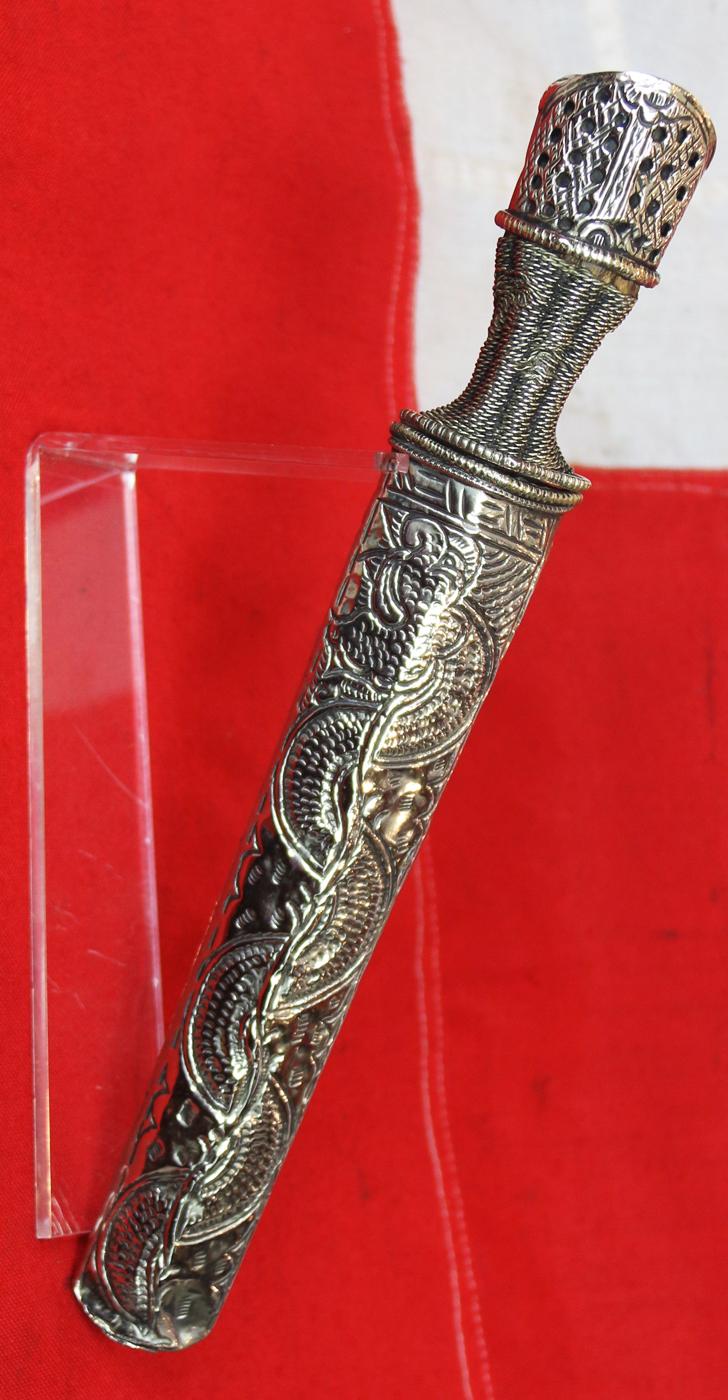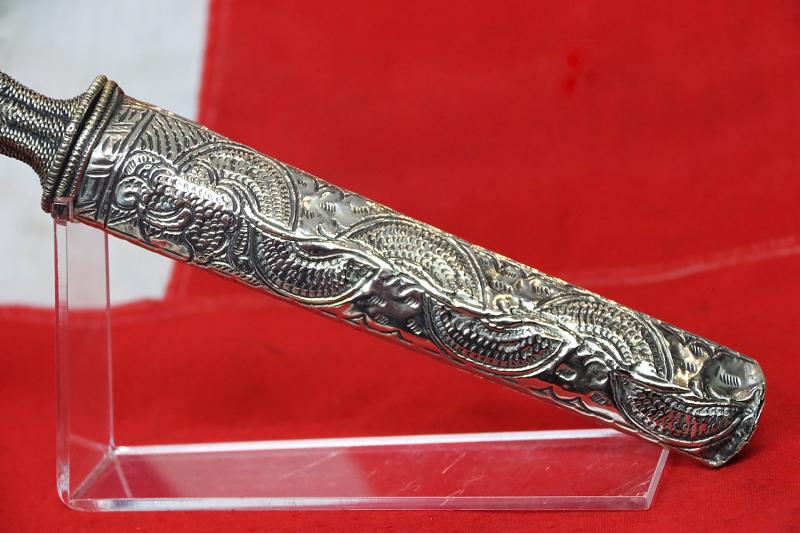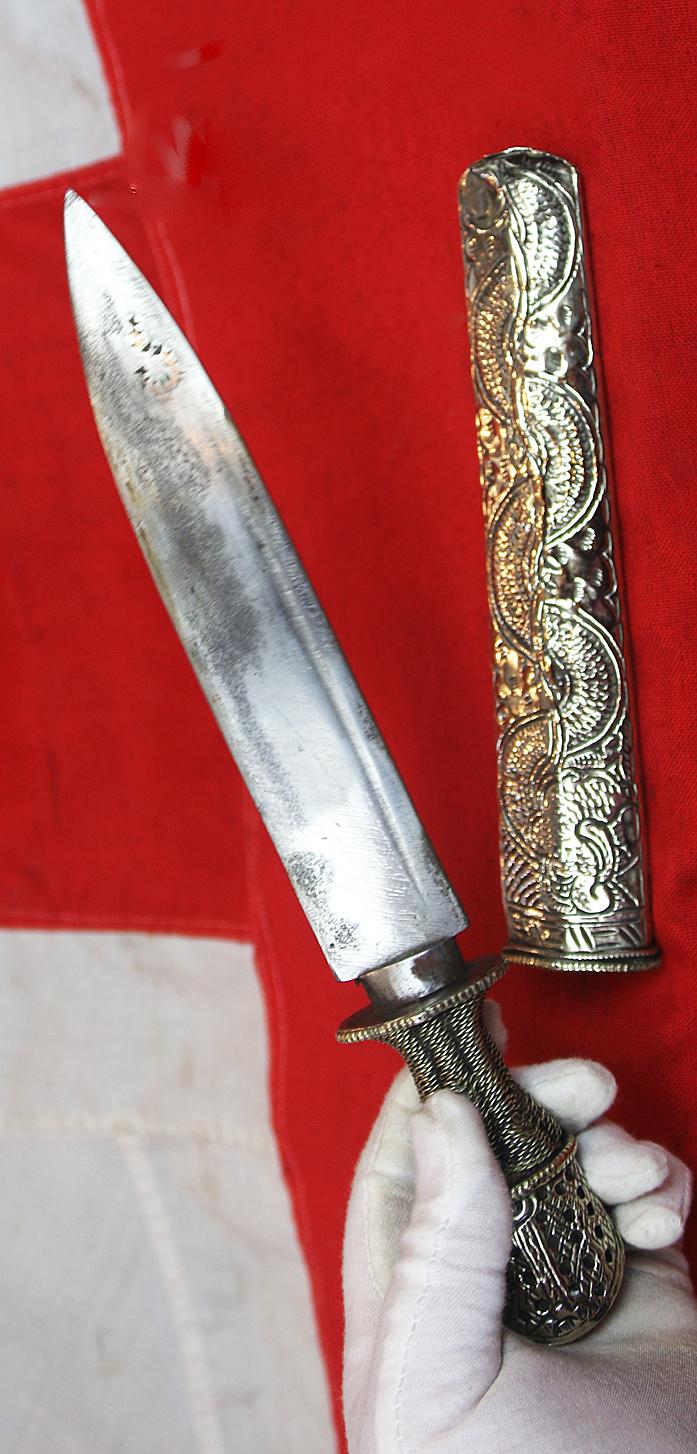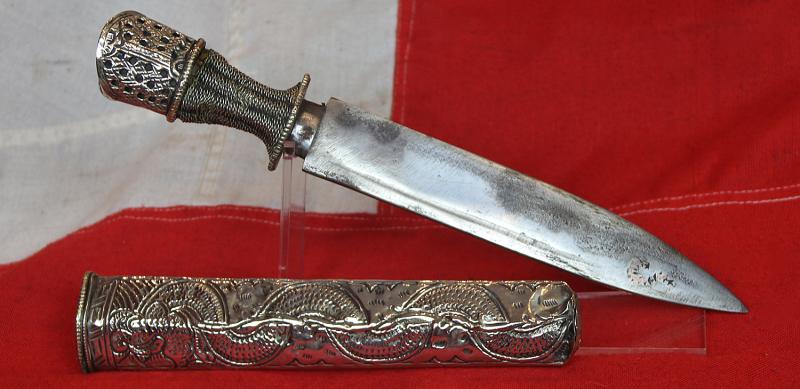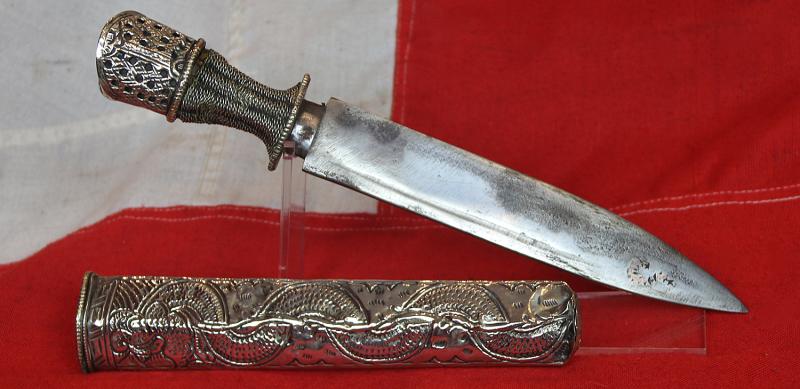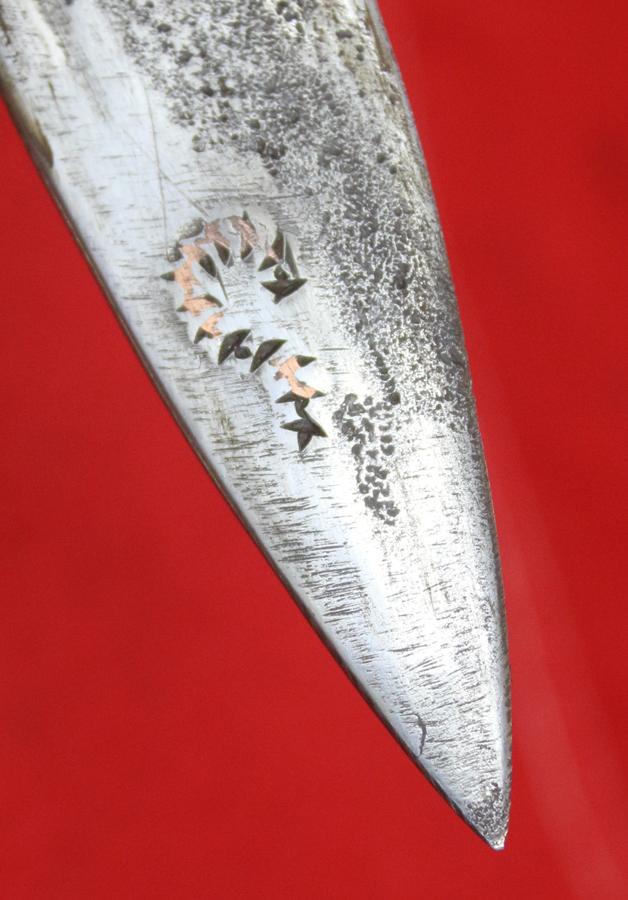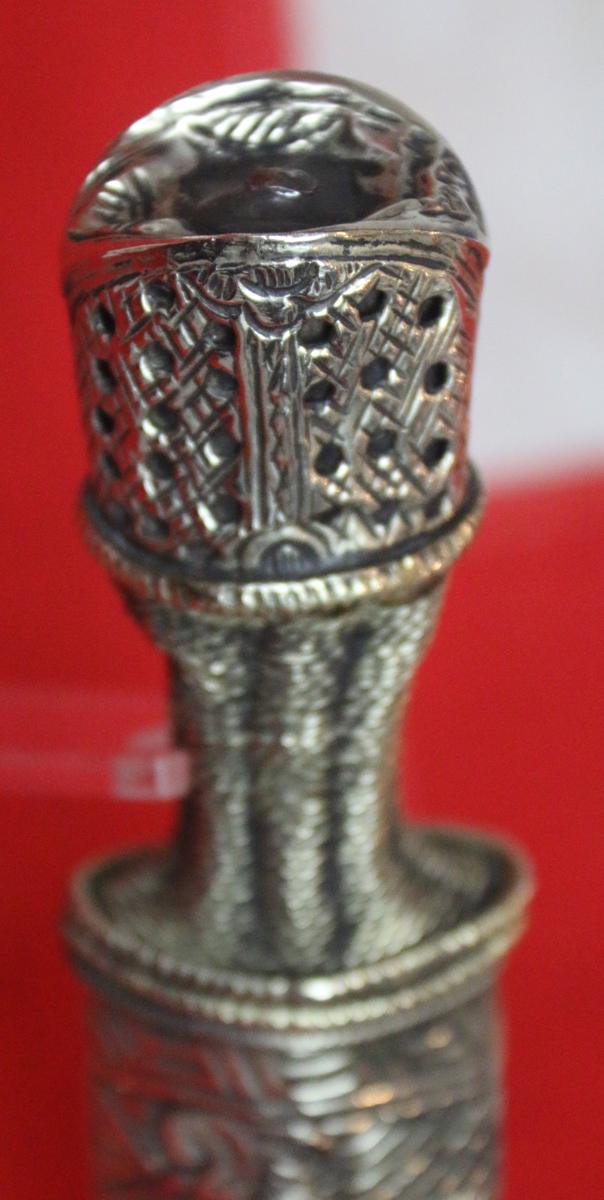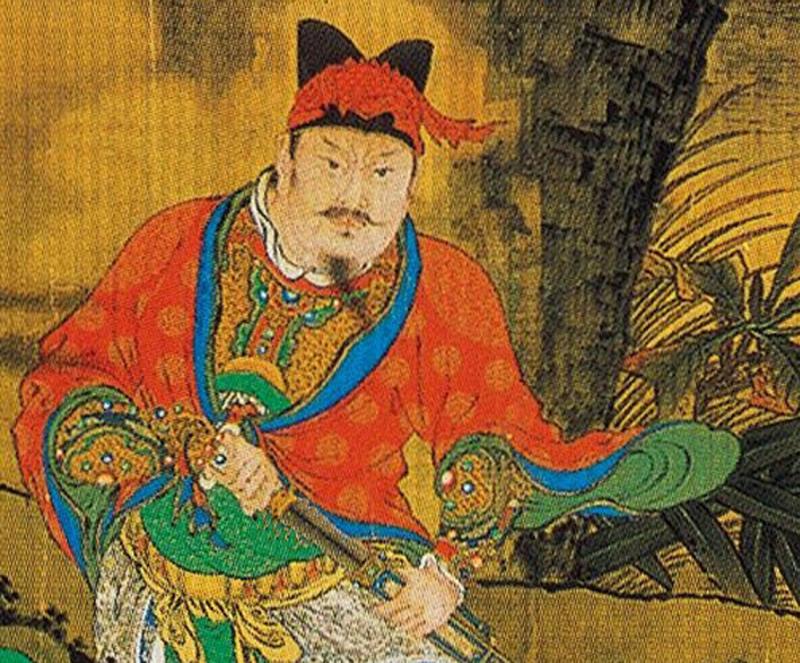An Antique Chinese, Tibetan Silver Dagger, Ching Dynasty Period With Finely Decorated Scabbard and Pierced Hilt Pommel.
Openwork pierced pommel with a tightly silver wire bound ribbed grip, and hammered silver scabbard decorated with elaborate Chines dragon designs. Single edged graduating steel blade bearing a metal inlaid armourer's mark at the tip in the design of a dragon's tail. The second of a matched pair from the same Ching armourers workshop
The Qing dynasty, officially the Great Qing pronounced Ching, was the last imperial dynasty of China and Mongolia. It was established in 1636, and ruled China proper from 1644 to 1912. The Qing multi-cultural empire lasted for almost three centuries and formed the territorial base for modern China. It was the fifth largest empire in world history. The dynasty was founded by the Manchu Aisin Gioro clan in Manchuria. In the late sixteenth century, Nurhaci, originally a Ming Jianzhou Guard vassal, began organizing "Banners", military-social units that included Manchu, Han, and Mongol elements. Nurhaci formed the Manchu clans into a unified entity. By 1636, his son Hong Taiji began driving Ming forces out of the Liaodong Peninsula and declared a new dynasty, the Qing.
In an unrelated development, peasant rebels led by Li Zicheng conquered the Ming capital, Beijing, in 1644. Rather than serve them, Ming general Wu Sangui made an alliance with the Manchus and opened the Shanhai Pass to the Banner Armies led by the regent Prince Dorgon. He defeated the rebels and seized the capital. Resistance from the Southern Ming and the Revolt of the Three Feudatories led by Wu Sangui delayed the Qing conquest of China proper by nearly four decades. The conquest was only completed in 1683 under the Kangxi Emperor reign (1661-1722). The Ten Great Campaigns of the Qianlong Emperor from the 1750s to the 1790s extended Qing control into Inner Asia.
During the Qianlong Emperor reign (1735-1796) the dynasty reached its apogee, but then began its initial decline in prosperity and imperial control. The population rose to some 400 millions, but taxes and government revenues were fixed at a low rate, virtually guaranteeing eventual fiscal crisis. Corruption set in, rebels tested government legitimacy, and ruling elites failed to change their mindsets in the face of changes in the world system. Following the Opium Wars, European powers imposed "unequal treaties", free trade, extraterritoriality and treaty ports under foreign control. The Taiping Rebellion (1850-1864) and the Dungan Revolt (1862-1877) in Central Asia led to the deaths of some 20 million people, most of them due to famines caused by war. In spite of these disasters, in the Tongzhi Restoration of the 1860s, Han Chinese elites rallied to the defense of the Confucian order and the Qing rulers. The initial gains in the Self-Strengthening Movement were destroyed in the First Sino-Japanese War of 1895, in which the Qing lost its influence over Korea and the possession of Taiwan. New Armies were organised, but the ambitious Hundred Days' Reform of 1898 was turned back in a coup by the conservative Empress Dowager Cixi. When the Scramble for Concessions by foreign powers triggered the violently anti-foreign "Boxers", the foreign powers invaded China, Cixi declared war on them, leading to defeat and the flight of the Imperial Court to Xi'an.
When knives such as this were collected, by explorers and officers in the time of Queen Victoria, during the Opium Wars and the Boxer Rebellion.
A knife from a higher ranking Sino Tibetan that itself evokes the very wonders of North West China,Tibet and Shangri La, a word that conjures up the imagery of exoticism of the Orient. In the ancient Tibetan scriptures, and the existence of seven such places is mentioned as Nghe-Beyul Khimpalung. The use of the term Shangri-La is frequently cited as a modern reference to Shambhala, a mythical kingdom in Tibetan Buddhist tradition, which was sought by Eastern and Western explorers; Hilton was also inspired by then-current National Geographic articles on Tibet, which referenced the legend. And it was wonderful knives such as this very one that symbolised that wonderful culture, and never before seen by the average Victorian in England
Known in Tibet as a Gus knives, they appeared during the period of Tubo King Zhigung Tsampo. According to Historical Records of the Hans and the Tibetans, Gus knives were made by nine brothers with small eyes in an environmentally fierce place called Sidor. The eldest made a knife sharp enough to cut a rope ladder leading up to the heaven. His eight brothers all made knives with sharp blades as well.
One of the Gus knives was the Guda knife, made by the legendary master of the nine brothers together with his offspring.
11.5 inches long overall
Code: 24867
400.00 GBP

